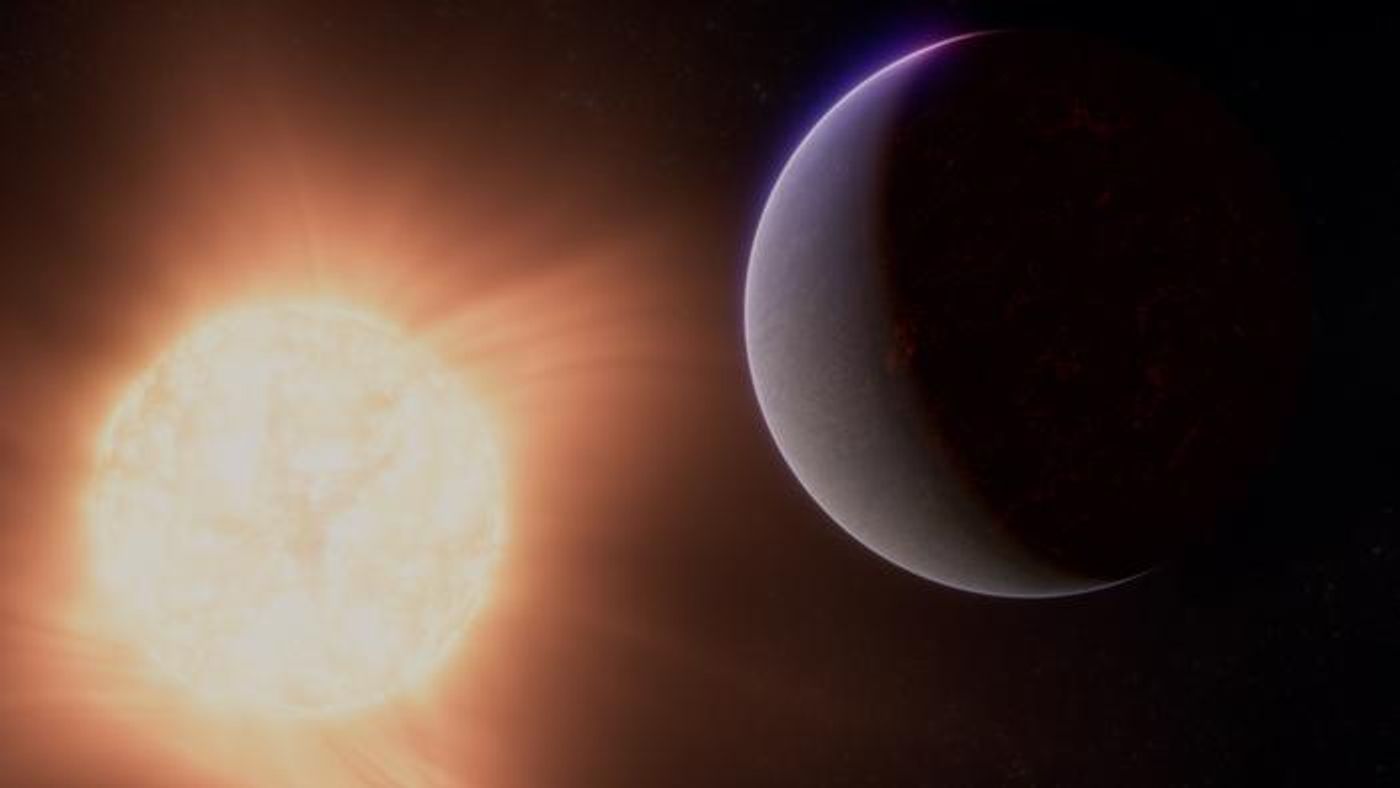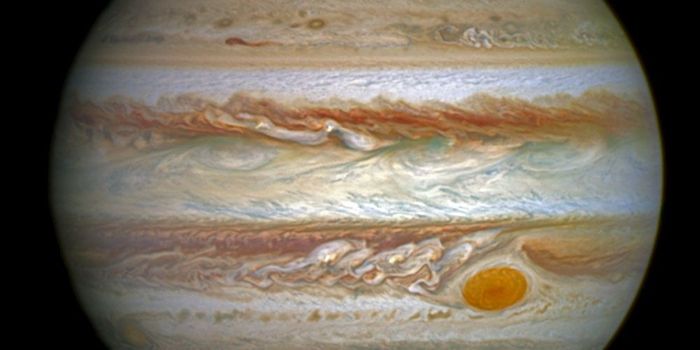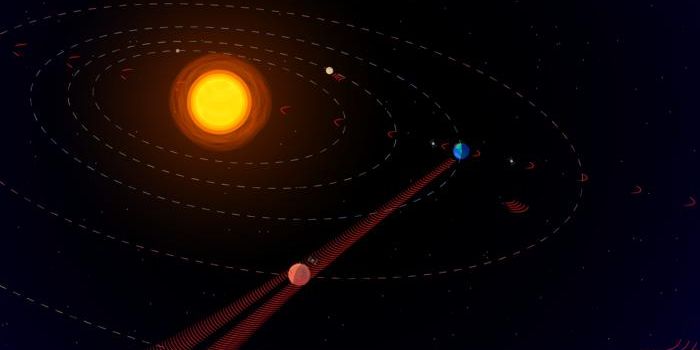55 Cancri e: Evidence of a Rocky Exoplanet Atmosphere Uncovered
NASA’s James Webb Space Telescope (JWST) continues to reveal the secrets of the universe every time it operates, including groundbreaking exoplanet research. Most recently, scientists used JWST’s powerful infrared instruments to discover an atmosphere enveloping the rocky exoplanet, 55 Cancri e, which is located approximately 41 light-years from Earth and whose diameter is almost double our planet, also known as a super-Earth.
What’s even more fascinating is that the surface of 55 Cancri e is most likely comprised of active magma oceans due to its extremely close orbit with its Sun-like star at 1.4 million miles, or 1/25th of Mercury’s orbit within our own solar system. These incredible findings were published today in Nature and hold the potential to help astronomers better understand exoplanetary formation and evolution and the search methods for uncovering it.
Artist's illustration of 55 Cancri e orbiting its Sun-like star. (Credit: NASA, ESA, CSA, Ralf Crawford (STScI))
“I’ve worked on this planet for more than a decade,” said Dr. Diana Dragomir, who is an assistant professor an exoplanet researcher at the University of New Mexico and a co-author on the study. “It’s been really frustrating that none of the observations we’ve been getting have robustly solved these mysteries. I am thrilled that we’re finally getting some answers!”
While 55 Cancri e has been previously identified to potentially possess an atmosphere comprised of volatiles (nitrogen, oxygen, and carbon dioxide) using the now-retired NASA Spitzer Space Telescope, astronomers have been unable to confirm these findings. Now, with JWST’s powerful NIRCam (Near-Infrared Camera) and MIRI (Mid-Infrared Instrument), astronomers used this data to identify the atmosphere of 55 Cancri e being comprised of carbon dioxide or carbon monoxide that envelopes that is fed by a magma ocean.
Data from NASA JWST's MIRI on 55 Cancri e. (Illustration: NASA, ESA, CSA, Joseph Olmsted (STScI) Science: Aaron Bello-Arufe (JPL))
“We’ve spent the last ten years modelling different scenarios, trying to imagine what this world might look like,” said Dr. Yamila Miguel, who is an associate professor at the University of Leiden and a co-author on the study. “Finally getting some confirmation of our work is priceless!”
What new discoveries about 55 Cancri e will astronomers make in the coming years and decades? Only time will tell, and this is why we science!
As always, keep doing science & keep looking up!
Sources: EurekAlert!, Nature, NASA










